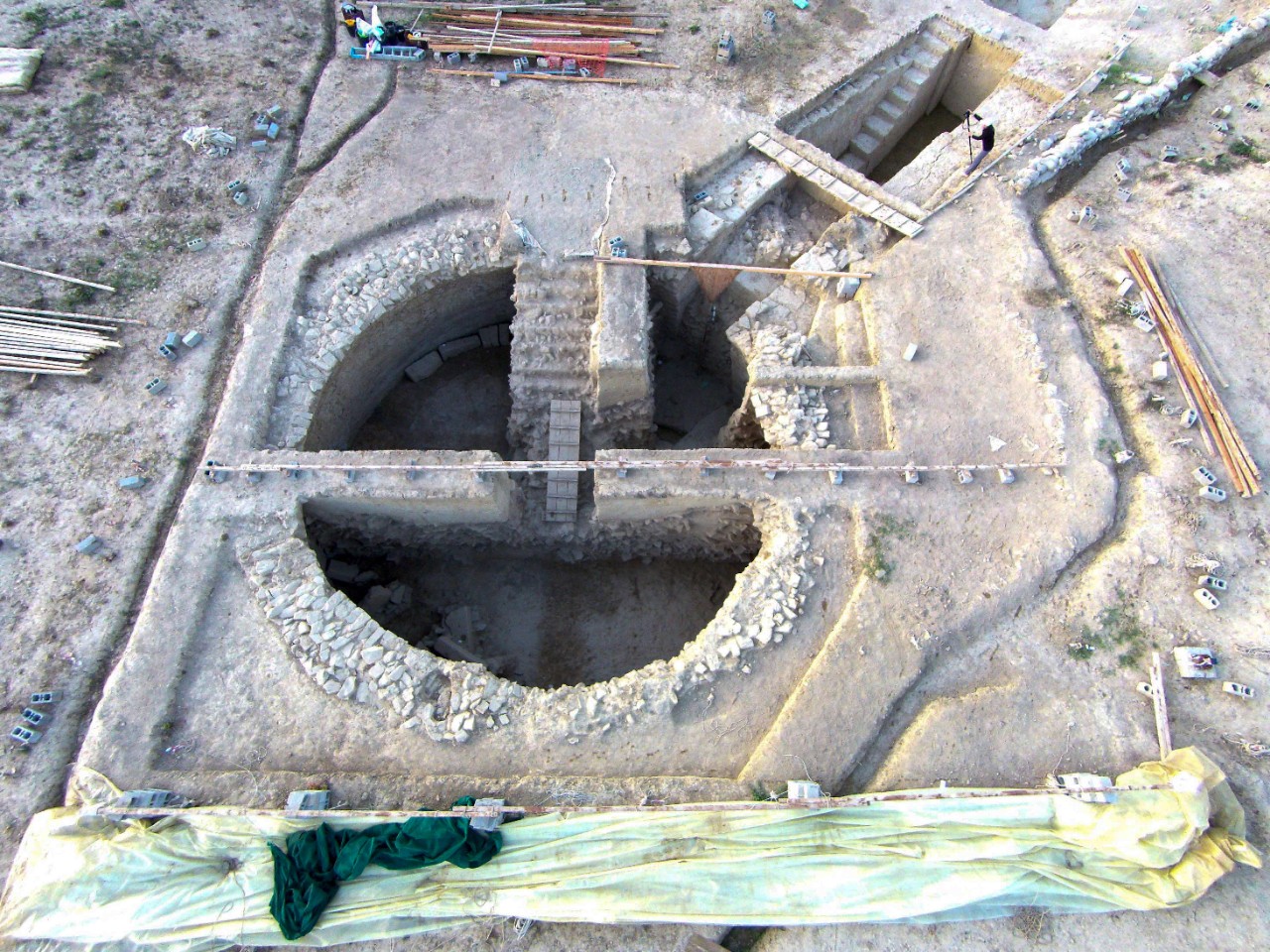
Greek news: UC archaeologists, Greeks bond over Pylos excavation
The UC Classics project has created lasting friendships, Greeks told news outlet Ekathimerini
Besides helping the world understand ancient Greece, University of Cincinnati archaeologists have made a lasting impression on local Greeks who contributed to recent excavations.
Greeks who worked on recent UC projects told news outlet Ekathimerini they have made lasting friendships with UC's team, led by archaeologists Sharon Stocker and Jack Davis, the department head in UC's Classics.

UC senior research associate Sharon Stocker works at an excavation at Pylos. Photo/UC Classics
The archaeologists working in Pylos, Greece, in 2015 made the startling discovery of the tomb of the "Griffin Warrior," a military leader who upon his death was entombed with weapons, armor and gold jewelry. In 2018, they found two gold-lined family tombs containing more relics.
UC archaeologists have a long history of working closely with local residents during historic projects across the Mediterranean dating back to Carl Blegen's excavation of Troy in the 1930s.
"Over the years our bond with the locals has become even stronger," Stocker told Ekathimerini. "They are very proud of the work being done in the area and are very protective of us."
"This job has made me a better person," site supervisor Sia Giannakopoulou said.
In November, the Greek excavation crew hosted a Thanksgiving dinner for the Americans.
Featured image at top: UC archaeologists discovered two Bronze Age family tombs near the grave of the Griffin Warrior, a Greek military leader who was buried with armor, weapons and jewelry. The round tombs, called Tholos VI and VII, at one time were lined with gold foil and contained artifacts that could shed new light on life in ancient Greece. Aerial photo/Denitsa Nenova/UC Classics
More UC Classics in the news

A gold ring found in the family tombs at Pylos depicts bulls and barley. Archaeologists believe it's the first known depiction of domestic animals and agriculture in a single artwork from ancient Greece. Photo/Jeff Vanderpool/UC Classics
Next Lives Here
The University of Cincinnati is classified as a Research 1 institution by the Carnegie Commission and is ranked in the National Science Foundation's Top-35 public research universities. UC's graduate students and faculty investigate problems and innovate solutions with real-world impact. Next Lives Here.
Become a Bearcat
- Apply online or get more information about undergraduate enrollment by calling 513-556-1100.
- Learn more about UC's many undergraduate and graduate programs.
Related Stories
Fusion reactors may be key to uncovering dark matter
December 22, 2025
Yahoo! News highlights a new study by University of Cincinnati physicist Jure Zupan that explains how fusion reactors might create subatomic particles associated with dark matter.
UC public relations course reaches vulnerable community
December 19, 2025
Rather than having students find opportunities for real world applications of their degrees beyond class, why not bring it to them in the classroom? The public relations campaigns class, offered through the communications department in UC’s College of Arts and Sciences, gives students a taste of experience in the field.
Bazinga! UC physicist cracks ‘Big Bang Theory’ problem
December 19, 2025
A physicist at the University of Cincinnati and his colleagues figured out something two of America’s most famous fictional physicists couldn’t: theoretically how to produce subatomic particles called axions in fusion reactors.
